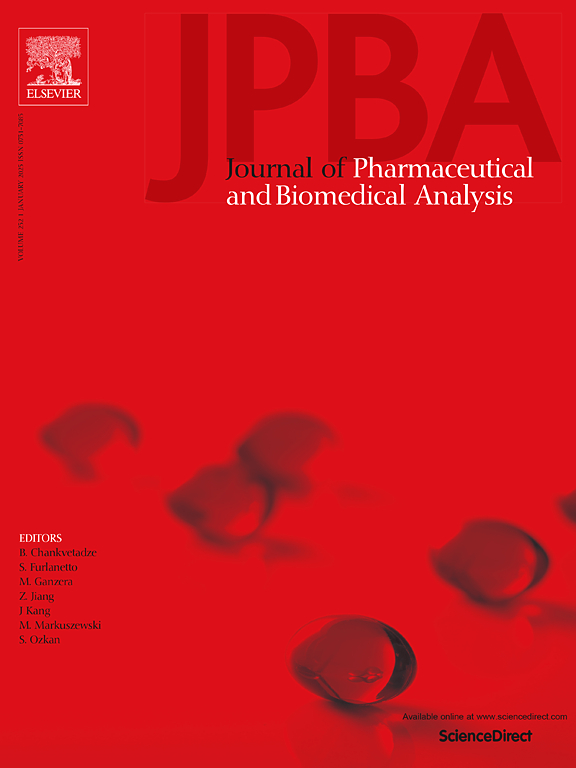Exploration of material basis: Chemical composition profile and metabolic profile in Xiao Jianzhong Granules
IF 3.1
3区 医学
Q2 CHEMISTRY, ANALYTICAL
Journal of pharmaceutical and biomedical analysis
Pub Date : 2025-03-04
DOI:10.1016/j.jpba.2025.116793
引用次数: 0
Abstract
Xiao Jianzhong Granules (XJZG), a well-known traditional prescription with protective effects on the gastric mucosa, as documented in the Treatise on Typhoid and Miscellaneous Diseases. Clinical studies have proven that XJZG exhibits significant anti-colitis properties and effectively alleviates duodenal ulcers. However, despite its clinical popularity, comprehensive studies on its chemical composition and in vivo metabolism remain limited. In the present study, gas chromatography coupled with mass spectrometry (GC-MS) and ultra-high-performance liquid chromatography coupled with Q-Exactive Orbitrap mass spectrometry (UHPLC Q-Exactive Orbitrap MS) were used to analyze the chemical composition of XJZG, while it is in vivo metabolic profile was further assessed with UHPLC Q-Exactive Orbitrap MS. Additionally, ultra-high-performance liquid chromatography coupled with triple quadrupole mass spectrometry (UHPLC-MS/MS) was utilized to quantify its primary components. As a result, a total of 51 volatiles were characterized by GC–MS, and 139 compounds were characterized by UHPLC Q-Exactive Orbitrap MS in vitro. In addition, 51 prototype components and 133 metabolites were characterized in vivo. Notably, 5 new compounds were discovered in this process. The main metabolic reactions included oxidation, reduction, hydrolysis, glucuronidation, and sulfate esterification. In quantitative analysis, 17 components were determined and successfully applied for detection by UPLC-MS/MS in multiple reaction monitoring mode. The quantitative methods were validated and met the requirements. Through multivariate statistical analysis, 6 components were selected as potential quality markers for XJZG based on PCA and OPLS-DA. Additionally, our study provides supplementary chemical evidence to further elucidate the material basis of XJZG.
求助全文
约1分钟内获得全文
求助全文
来源期刊
CiteScore
6.70
自引率
5.90%
发文量
588
审稿时长
37 days
期刊介绍:
This journal is an international medium directed towards the needs of academic, clinical, government and industrial analysis by publishing original research reports and critical reviews on pharmaceutical and biomedical analysis. It covers the interdisciplinary aspects of analysis in the pharmaceutical, biomedical and clinical sciences, including developments in analytical methodology, instrumentation, computation and interpretation. Submissions on novel applications focusing on drug purity and stability studies, pharmacokinetics, therapeutic monitoring, metabolic profiling; drug-related aspects of analytical biochemistry and forensic toxicology; quality assurance in the pharmaceutical industry are also welcome.
Studies from areas of well established and poorly selective methods, such as UV-VIS spectrophotometry (including derivative and multi-wavelength measurements), basic electroanalytical (potentiometric, polarographic and voltammetric) methods, fluorimetry, flow-injection analysis, etc. are accepted for publication in exceptional cases only, if a unique and substantial advantage over presently known systems is demonstrated. The same applies to the assay of simple drug formulations by any kind of methods and the determination of drugs in biological samples based merely on spiked samples. Drug purity/stability studies should contain information on the structure elucidation of the impurities/degradants.

 求助内容:
求助内容: 应助结果提醒方式:
应助结果提醒方式:


